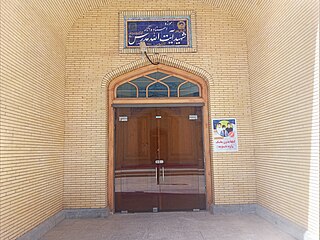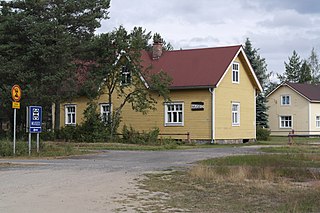 W
WThe Bavarian State Painting Collections, based in Munich, oversees the collections of artworks held by the Free State of Bavaria. It was establisehd in 1799 as Centralgemäldegaleriedirektion.Artwork include paintings, sculpture, prints, photographs, video art and installation art. Some pieces are on display in numerous galleries and museums throughout Bavaria.
 W
WCentral Museum of Dinosaurs of Mongolia is a paleontological museum in Chingeltei District, Ulaanbaatar. It is dedicated to the preservation and discovery of dinosaur fossils. The museum was finished in 1974.
 W
WA farm museum, or museum farm, is a museum based on a historical farm and its buildings, presenting agricultural history. Often the farm is still a working farm, for demonstration and educational purposes.
 W
WThe Folk Heritage Museum or Phelchey Toenkhyim is a museum in Thimphu, Thimphu District, Bhutan.
 W
WA folk museum is a museum that deals with folk culture and heritage. Such museums cover local life in rural communities. A folk museum typically displays historical objects that were used as part of the people's everyday lives. Examples of such objects include clothes and tools. Many folk museums are also open-air museums and some cover rural history.
 W
WA furniture museum is a museum with exhibits relating to the history and art of furnitures.
 W
WThe Hassan Modarres Museum is a Museum belongs to the 21st century and is located in Kashmar, Razavi Khorasan Province in Iran.
 W
WA heritage centre, center, or museum is a public facility – typically a museum, monument, visitor centre, or park – that is primarily dedicated to the presentation of historical and cultural information about a place and its people, and often also including, to some degree, the area's natural history. Heritage centres typically differ from most traditional museums in featuring a high proportion of "hands-on" exhibits and live or lifelike specimens and practical artifacts.
 W
WAn imaginarium is a place devoted to the imagination. There are various types of imaginaria, centers largely devoted to stimulating and cultivating the imagination, towards scientific, artistic, commercial, recreational, or spiritual ends.
 W
WThe Musée international d'Art naïf Anatole Jakovsky is a museum located in Nice, which displays 18-to-21st century works specialized in naive art. The museum was inaugurated on 5 March 1982.
 W
WLalla Rookh Museum is a museum about the Indo-Surinamese history and culture. It is located in the Lalla Rookh Complex in Paramaribo, Suriname.
 W
WA lapidarium is a place where stone monuments and fragments of archaeological interest are exhibited.
 W
WA local museum or local history museum is a museum that covers local history. Its collection normally includes objects with a local connection of some sort. Such museums are often small in nature and have a low budget for their running costs. Entry costs are normally low as well.
 W
WAn online exhibition, also referred to as a virtual exhibition, online gallery, cyber-exhibition, is an exhibition whose venue is cyberspace.
 W
WA palace museum refers a number of museums that are housed in former royal palaces.The Palace Museum, housed in the Forbidden City in Beijing, China. The National Palace Museum, formerly housed in the Forbidden City, now sits in Taipei, Taiwan and houses part of its former collection. The National Palace Museum of Korea located in Seoul, South Korea, is the repository of that country's royal heritage. The Topkapı Palace Museum in Istanbul The Red Fort Archaeological Museum in Delhi, India, was also known as Palace Museum during the British rule. The Malacca Sultanate Palace Museum is an example of a palace that was reconstructed to function as a museum.
 W
WA private museum is a collection, usually on a very limited topic and operated by individual enthusiasts, collectors, clubs or companies.
 W
WA shark tunnel is an underwater tunnel that passes through an aquarium, typically with sharks and related aquatic life. They are usually made of thick acrylic glass.
 W
WThe Sodankylä Local History Museum is a Finnish local museum of the Sodankylä municipality presenting the peasant life of the early 20th century in the villages of Sodankylä and Sompio. The main building of the museum is the Kuukkeli House, which was moved from the village of Riesto, in the area of the current Loka reservoir. Around the main building there is a typical courtyard of the era: a warehouse, a smoke sauna and a pirrakota shelter, barns, the granaries of Penjus and Erkkilä, a workshop, a Lapland house, and a grain drying cabin. There are a total of 13 buildings. The warehouse, blacksmith's workshop and toll have been built on site using traditional methods to depict these buildings that belonged to the peasant's courtyard. Other buildings have been relocated from different parts of Sodankylä. The starting point of the museum's collections is the collection of objects and the recording of tradition, which was started by the Sodankylä Society in 1949. The Kuukkeli House was moved to the museum area in 1962.
 W
WThe Virtual Library museums pages (VLmp) formed an early leading directory of online museums around the world. The resource was founded by Jonathan Bowen in 1994, originally at the Oxford University Computing Laboratory in the United Kingdom, It has been supported by the International Council of Museums (ICOM) and Museophile Limited. as part of the World Wide Web Virtual Library, initiated by Tim Berners-Lee and later managed by Arthur Secret. The main VLmp site moved to London South Bank University in the early 2000s and is now hosted as a wiki on Wikia.
 W
WVisible storage is a method of maximising public access to museum and art collections that would otherwise be hidden from public view. Many museums and galleries have over 90% of their collections in storage at any one time and the technique has been widely adopted recently by institutions ranging from the Metropolitan Museum of Art in New York, to London's Victoria & Albert Museum as well as in many smaller collections.